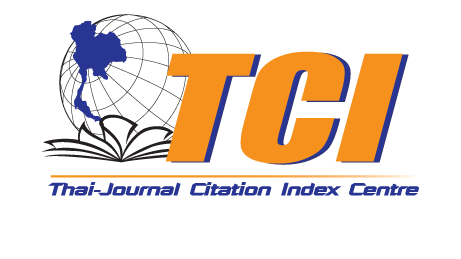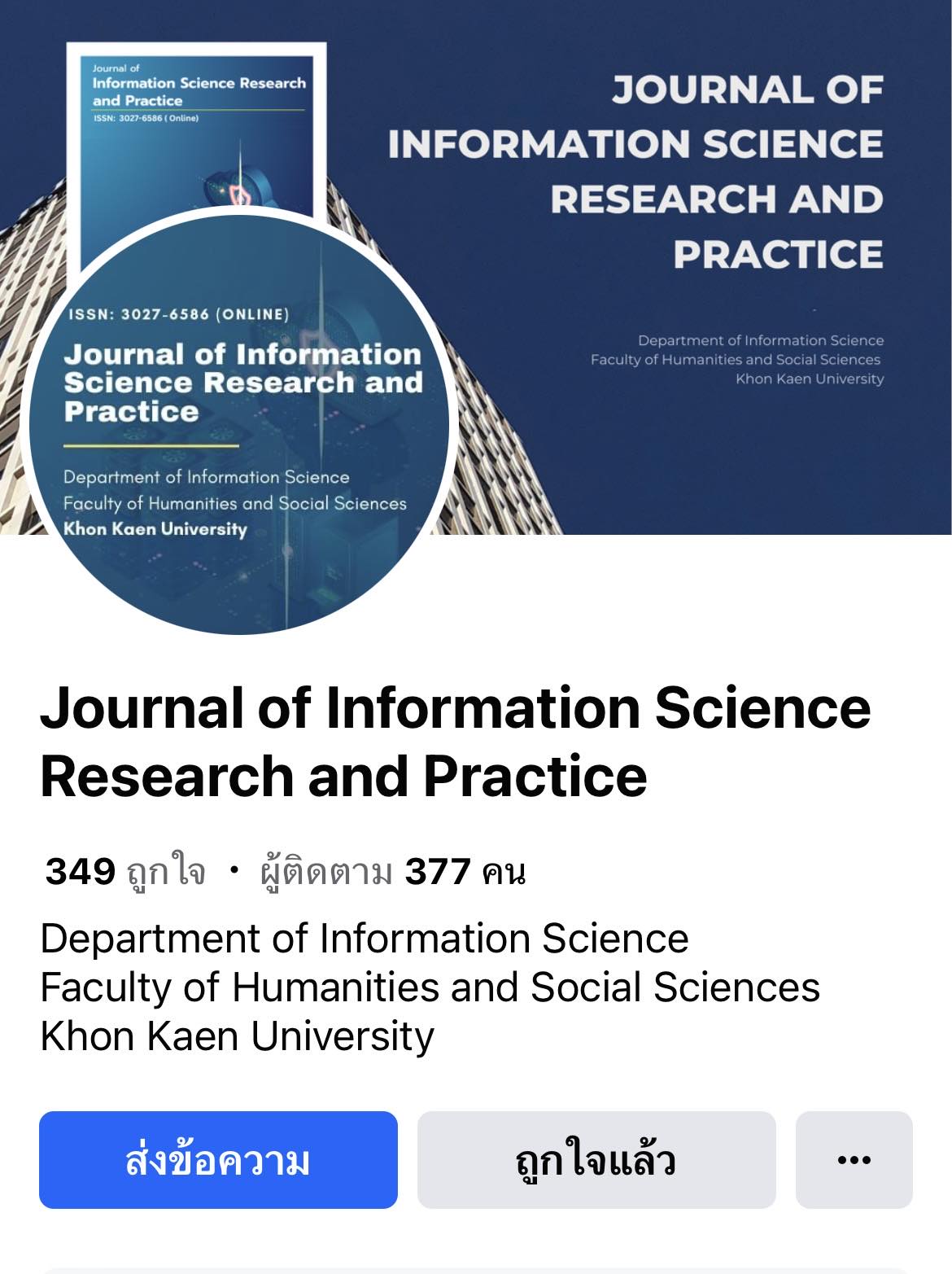Factors of Tourist's Intention to Use Line OA for Songkhla Lagoon Tourism
DOI:
https://doi.org/10.14456/jiskku.2024.2Keywords:
Intention to use, Songkhla Lagoon, Tourism, Factor, Line OAAbstract
Purpose: The study aimed to investigate the factors influencing of tourist's intention to use Line OA, namely “Mata-Lumnam” for travelling around Songkhla Lagoon, and analyze the levels of tourist’s satisfaction regarding the use of Line OA in the both factors” usage perception and design.
Methodology: The study employed a survey research design, utilizing a questionnaire to collect data from 87 tourists who had the experience of traveling to Songkhla Lagoon. The data collection technique employed convenience sampling. In part of analysis, this study used descriptive analysis such as frequency, percentage, mean, and standard deviation. In addition, the regression analysis was conducted to analyze factor’s influences.
Findings: The results showed that the usage perception directly influenced tourist’s intention to use Line OA, while the design factor did not have the direct influence on tourist’s intention to use Line OA for tourism in Songkhla Lagoon at the significant level of 0.05. Additionally, the results indicated a very high level of tourist satisfaction in both the usage factor and the design factor.
Applications of this study: The results of this study can be used as a guideline to design and develop Line OA, for providing information to tourists under the limitation on time and budget. In addition, a purposed model will be useful for the other researchers and academics who want to develop a model in the different context of their studies.
Downloads
References
Chinnasri, W., & Treepuech, W. (2021). Development of activity attendance management system through Line official account. (In Thai). VRU Research and Development Journal Science and Technology, 16(2), 43-56.
Davis, F. D. (1989). Perceived usefulness, perceived ease of use, and user acceptance of information technology. MIS Quarterly, 13(3), 319–340. https://doi.org/10.2307/249008
Delone, W. H., & McLean, E. R. (2003). The DeLone and McLean model of information systems success: a ten-year update. Journal of Management Information Systems, 19(4), 9–30. https://doi.org/10.1080/07421222.2003.11045748
Hair, J. F., Hult, G. T. M., Ringle, C. M., Sarstedt, M., & Thiele, K. O. (2017). Mirror, mirror on the wall: a comparative evaluation of composite-based structural equation modeling methods. Journal of the Academy of Marketing Science, 45(5), 616–632. https://doi.org/10.1007/s11747-017-0517-x
Hair, J. F., Ringle, C. M., & Sarstedt, M. (2011). PLS-SEM: Indeed a silver bullet. Journal of Marketing Theory and Practice, 19(2), 139–152. https://doi.org/10.2753/MTP1069-6679190202
Kang, M.J., WU, Z., & Hwang, H.J. (2021). A study on the mediating effect of customer orientation between o2o service quality and customers’ perceived service satisfaction. Journal of Distribution Science, 19(2), 37–44. https://doi.org/10.15722/jds.19.2.202102.37
Kim, Y., Wang, Q., & Roh, T. (2021). Do information and service quality affect perceived privacy protection, satisfaction, and loyalty? Evidence from a Chinese O2O-based mobile shopping application. Telematics and Informatics, 56, 101483. https://doi.org/10.1016/j.tele.2020.101483
Krataithong, J., & Rakrachakarn, P. (2020). The impact of relationship marketing on millennial customer loyalty in the Bangkok hotel industry. (In Thai). Human Behavior, Development and Society, 21(4), 86–96.
Munchoei, N., Tati, S., & Kanthane, S. (2020). User interface design and implementation for travel recommendation mobile application to stimulate tourism economics under we love Chiang Mai project. (In Thai). Journal of Management Science Pibulsongkram Rajabhat University, 2(2), 1-10.
Nanthiyaphoosit, J., & Khanthahat, P. (2022). Relevant factors affecting the sustainable development of Chanthaburi tourism industry. (In Thai). Journal of Social Science and Buddhistic Anthropology, 7(4), 378-395.
Ramadanty, S., & Widayanti, R. (2020). Sales promotion and brand loyalty through mobile application Line official account. (In Thai). Journal of Critical Reviews, 7(17), 1720-1727.
Ramayah, T., Cheah, J., Chuah, F., Ting, H., & Mumtaz, A.M. (2016). Partial least squares structural equation modelling (pls-sem) using smartpls 3.0: an updated guide and practical guide to statistical analysis. 1st ed. Malaysia: Pearson.
Schumacker, R. E., & Lomax, R. G. (2010). A beginner’s guide to structural equation modeling. (3rd ed.). New Jersey: Lawrence Erbaum Associates.
Selamat, M. A., & Windasari, N. A. (2021). Chatbot for SMEs: Integrating customer and business owner perspectives. (In Thai). Technology in Society, 66, 101685.
Sittiwiset, S., Tungkawet, W., Nanthapoom, S., Yomchinda, C., & Thepbundit, C. (2019). The development of mobile application for free independent traveler promotion of Nang Lae sub-district, Muang district, Chiang Rai province. (In Thai). Mangrai Saan Journal, 7(1), 117-128.
Sophonamnuaikit, S., Vijchulata, C., Thammachotmethin, T., Yokkhun, P., & Chuwichien, S. (2022). Factors influencing the selection of gastronomy tourism of tourists in Chaing Saen district, Chaing Rai province. (In Thai). Journal of Philosophical Vision, 27(1), 38-49.
Tavitiyaman, P-QU.H., Tsang, W-S.L., & Lam, C-W.R. (2021). The influence of smart tourism applications on perceived destination image and behavioral intention: The moderating role of information search behavior. (In Thai). Journal of Hospitality and Tourism Management, 46, 476-487.
Wongamonwit, C., & Chinavaro, P.N. (2021). Development of tourism applications in Sikhiu district Nakonratchasima province. (In Thai). Mculampang Journal, 10(1), 152-162.








